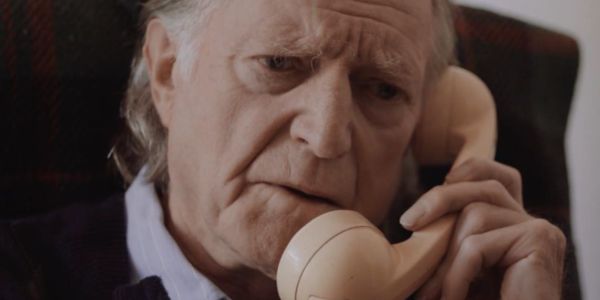Piercing The Android (Or, How We Came To Make A Film About Uncanny Creatures Of The Dark Web)

All articles contributed by people outside of our team are…
Beginnings
In early 2015, we (which is to say, us: Tim and Phil, Phil and Tim — no need to worry about the order) became strangely obsessed with two uncanny cultural moments. The first of these, The Max Headroom Incident of 1987, in which a masked video pirate hijacked the signal of a Chicago broadcaster in order to play out a pre-recorded tape awash with warps and modulated static, is utterly terrifying.
Like many who have seen it, we fell down the rabbit hole and, whilst there, stumbled across another series of videos from the early internet. These delicious (and horrifying) curios featured ‘Tara’, a kind of homemade android, the architect of whom appeared to be the subject of much mystery and speculation. Both Tara and The Max Headroom Incident have something deeply unsettling in common. Each one feels as if, hidden within its visual composition or soundtrack, there is some terrifying secret to be decoded. And so for weeks, months even, we obsessed over them, delving forever deeper into subreddits and message boards, following a trail of vague facts and introspection late into the night, until we were too afraid to read on.
A Film Is Born
Tara and Max serve as the central inspirations for Broadcast Signal Intrusion, a short psychological horror film we made in collaboration with the BFI last year. The plot is simple.

In the winter of 2001, James, a grief-stricken video archivist, becomes increasingly obsessed with discovering the meaning behind a sinister television signal hijacking.
Decisions / Happy Accidents
We wanted the film to feel quiet and controlled, right up until the last scene, when we see our hero finally lose control. And so everything is on the dolly, always tracking very slowly into the characters. That slow creep really helps build a sense of insularity, tension, foreboding. We used Steadicam whenever we followed James walking, again striving for that precise level of control. So when in those final scenes we move into shakier, handheld, on-the-shoulder territory, it feels like
everything we thought we knew is quickly unravelling.

It was also a decision not to cut a lot. This is a still film. There’s nothing flashy. One scene between Rupert Hill and Robert Emms plays in a single uninterrupted wide shot. Again, it was all about creating rhythm. We worked really closely with our editor Andrew Connor to get the pacing and the structure right. He also built an incredible flash-frame sequence to interrupt the final scene. It feels like something out of ‘Persona’: a beautiful attack on the senses.
Our budget this time meant we could be more ambitious cinematically. We hired a dolly. We greenscreened several falls from the same high rise building. And we worked with an amazing production designer, who brought the video library to life in a way that left us breathless with joy each time we set foot inside it.

Broadcast was shot over four days in Manchester for £15,000 and the talent/generosity of the ragged little band of outsiders we have somehow assembled over the years. To mention them all by name would make for boring reading / take the attention away from us. So we won’t do that. What we’d like to do instead is sing all of their praises — from costume to make-up to camera – for their continued willingness to be a part of small films which don’t pay a lot but which just might – if we close-our-eyes-and-stumble- across-a-bit-of-luck — put us all in a place where we can do this forever.
And So…
As Joss Whedon once asked in a musical, where do we go from here? Well. We’ve just finished writing our debut feature and are about to set foot on the road to finance. It’s a pulpy, lurid, inky black psychological crime thriller, and tells the story of a middle-aged loser drunk who stumbles into something way bigger than him and his small-time betting talents. Oh, and it’s set at Christmas. In 1979.
We started out in comedy, so to make an arthouse horror film followed by a gambling movie might feel like something of a departure. And yet, regardless of genre, all of our work winds up being charged with the same three things.
Love. Loss. Escapism.
Maybe that says something about us. And if it does, we’re fairly certain it doesn’t say anything good.
What We Learned / Suspected All Along
Panic attacks solve nothing.
Sometimes a character can climb a stairwell in the sun and emerge on a rooftop seconds later in the rain.
Our editor is a genius.
Politeness is a virtue.
Colour is a magical thing.
Some Details
Title
Broadcast Signal Intrusion
Written and directed by
Phil Drinkwater & Tim Woodall
Produced by
Dana Bruce & Ash Turnbull
Made with the support of BFI and Creative England
Does content like this matter to you?
Become a Member and support film journalism. Unlock access to all of Film Inquiry`s great articles. Join a community of like-minded readers who are passionate about cinema - get access to our private members Network, give back to independent filmmakers, and more.
All articles contributed by people outside of our team are published through our editorial staff account.













